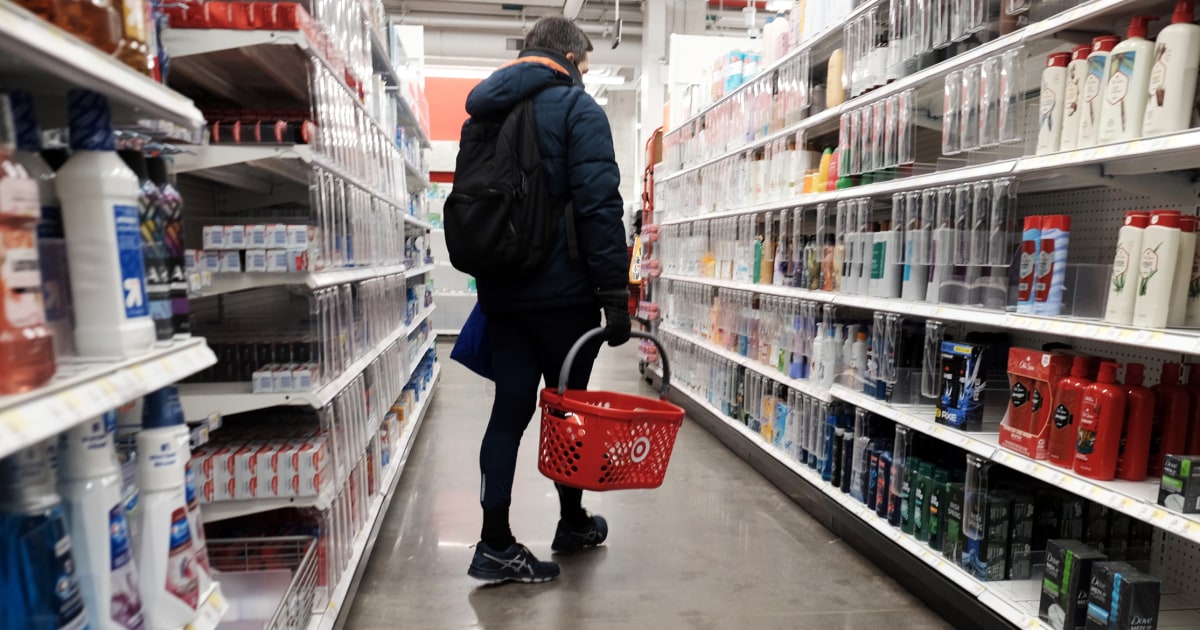WASHINGTON — American households have been reducing their savings and assuming increasing amounts of debtputting many in a weaker position to weather an economic downturn that has become more likely following the recent turmoil in the banking industry.
Fears of an economic slowdown were renewed this week as US regulators took over Silicon Valley Bank, Swiss officials stepped in to shore up the finances of swiss creditand a group of Wall Street firms have thrown a lifeline at First Republic Bank.
The events drew parallels to the 2008 financial crisis and are likely to cause banks to tighten their lending, putting additional pressure on already-strapped consumers, which in turn could cause them to cut spending and lead to layoffs in companies facing a drop in sales.
“What we’re seeing right now, in terms of banking sector stress, is likely to have amplifying effects on the deterioration in household finances,” said Gregory Daco, chief economist at EY-Parthenon. «We are likely to see an environment where banks are more cautious with their lending, especially smaller regional banks, and that will further exacerbate the weakness that we were already seeing.»
Goldman Sachs on Thursday increased its odds of a recession by 10 percentage points, to 35%. Other economists are even less optimistic that the US will be able to avoid an economic downturn, with those surveyed by Bloomberg putting the odds of a recession at 60%.
Through much of the past year, when inflation hit its highest levels in decades, consumers have largely been able to continue increasing their spending. While retail sales were down slightly in February compared to January, they were still up 5.4% from a year earlier, the Commerce Department reported this week.
Bank of America credit and debit card data for February showed household spending rose 2.7% year-over-year, «suggesting to us that consumer spending remains resilient even as the growth rate of the spending moderates,» according to a report last week from the Bank of America Institute.
But data indicates that wages have not kept pace with inflation during that period. As a result, Americans are increasingly turning to their credit cards and savings accounts to maintain their spending habits.
«The average person’s finances were probably better a year or two ago than they are now just because they had more cash and less debt,» said Ted Rossman, a senior industry analyst at Bankrate.com. “There was a time in early 21 when credit card balances were 17% lower than they were before the pandemic. And now they are up 28% from that low point.”
Americans have spent about half of the savings they amassed during the pandemic, going from about $2.1 trillion in excess savings from the influx of government stimulus checks and reduced spending during lockdowns to about $900 billion as of the third quarter. last year, according to report by JP Morgan.
At the same time, the percentage of people’s paychecks that goes into savings has dropped to about half of what it was before the pandemic, according to data of the Federal Reserve Bank of St. Louis.
Meanwhile, the amount of debt Americans carry has skyrocketed. Credit card balances rose by $61 billion to a record $986 billion in the final quarter of 2022, a quick reversal from two years ago when Americans paid off debt with stimulus checks, according to data of the New York Federal Reserve. Auto loan balances increased $94 billion.
There are signs that a growing number of consumers have had a harder time paying off that debt.
The percentage of credit card holders who accumulate debt from month to month has risen to 46%, up from 39% a year ago, according to Bankrate. Auto loan delinquencies have risen steadily from their pandemic lows with the share of auto loans at least 60 days past due at its highest level since 2006, according to a report last month from Cox Automotive.
All of those factors have investors, economists and corporate executives closely watching the Federal Reserve’s interest rate moves next week. Another round of rate hikes would make it more expensive for consumers to borrow money to finance a home or buy a car, or to maintain a balance on their credit cards. It will also put pressure on companies looking to borrow money.
But with persistently high inflation, up to 6% in February from a year earlier: Some economists say the Fed has no choice but to keep raising rates to rein in spending.
Another key factor economists say they are watching is the job market, which has remained strong in part because consumers have kept up their spending.
Job creation slowed in February but was still stronger than expected, with the economy adding 311,000 jobs, the Labor Department reported last week. The unemployment rate rose to 3.6%, relatively in line with last year. But even a slight increase in unemployment could cause millions of Americans to cut back on spending.
“The backbone of consumer spending activity is the labor market,” said Daco, the economist. “If the labor market starts to show more significant signs of cooling, moderating, weakening, that will have a direct effect on household income and, in turn, their ability and willingness to spend.”

